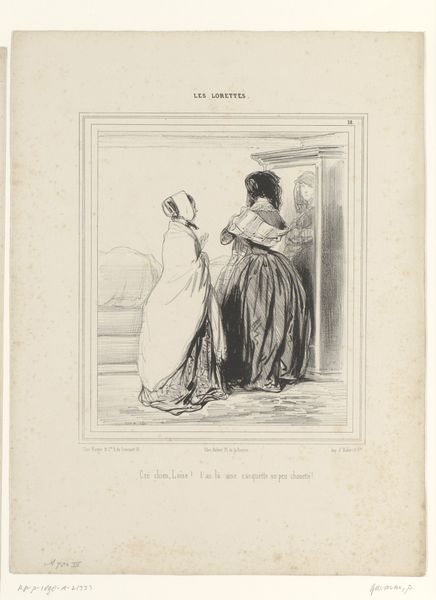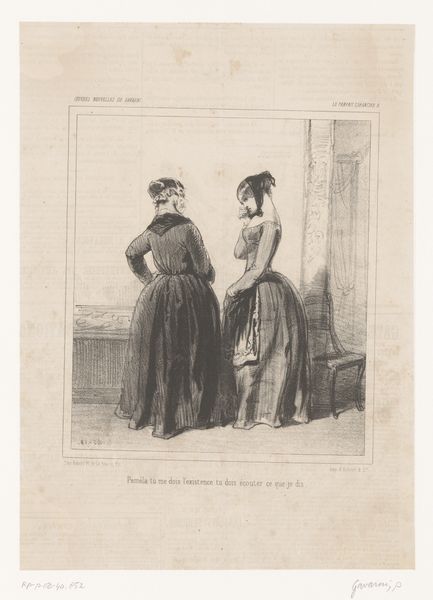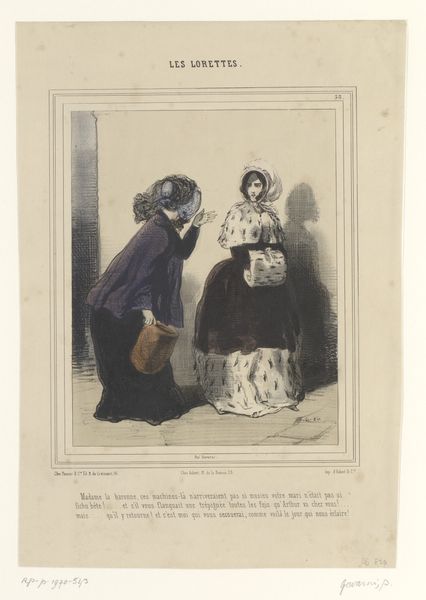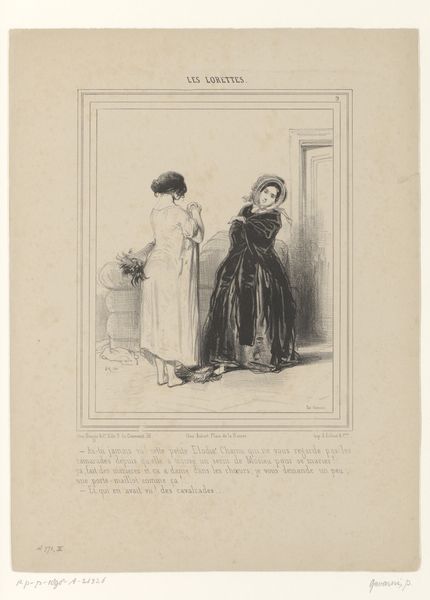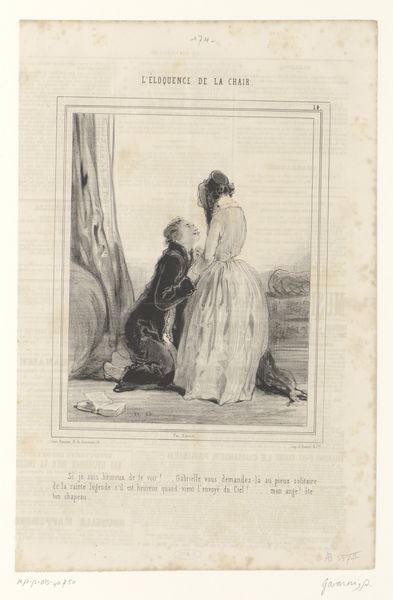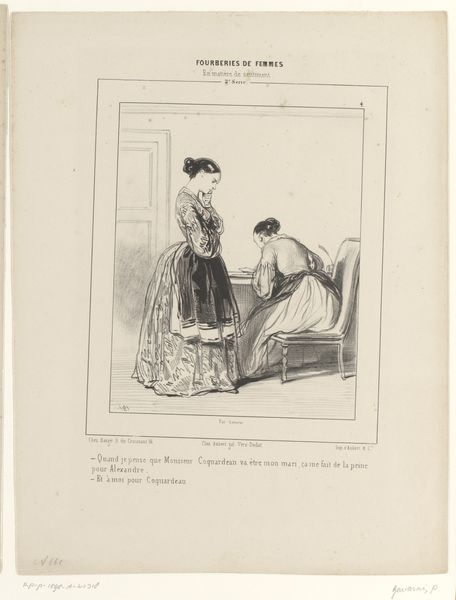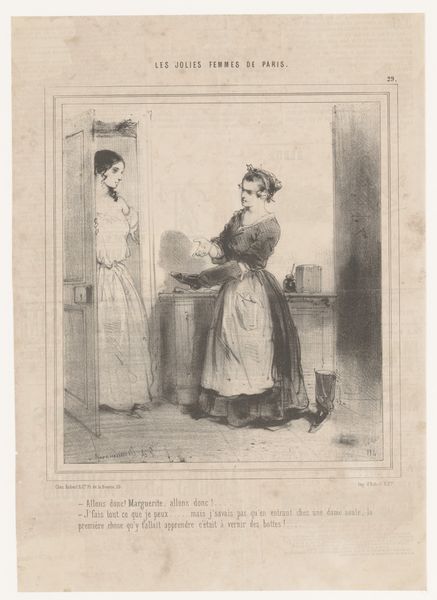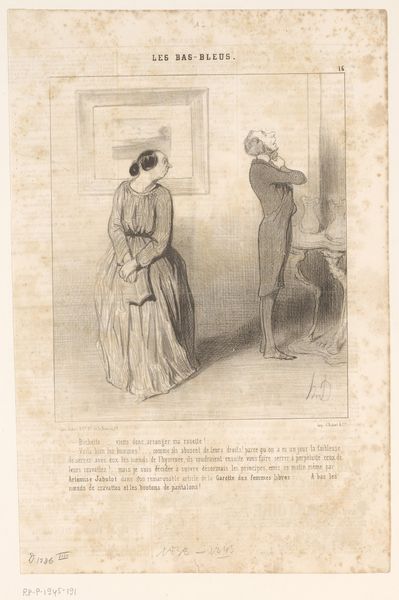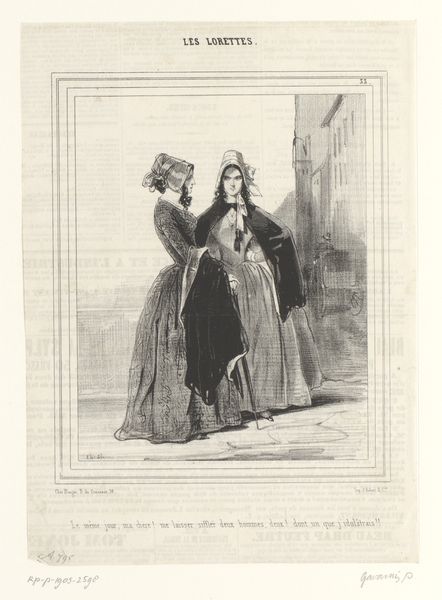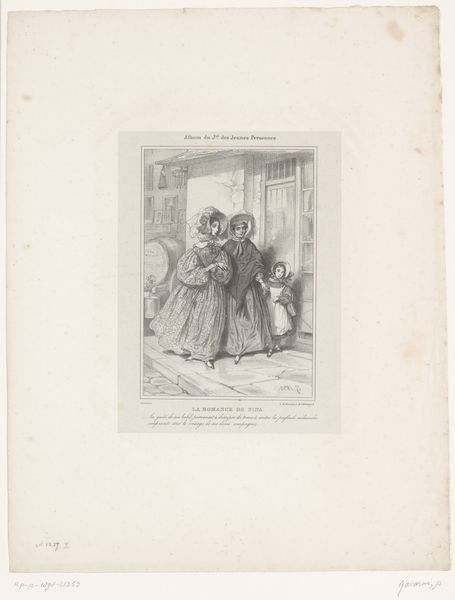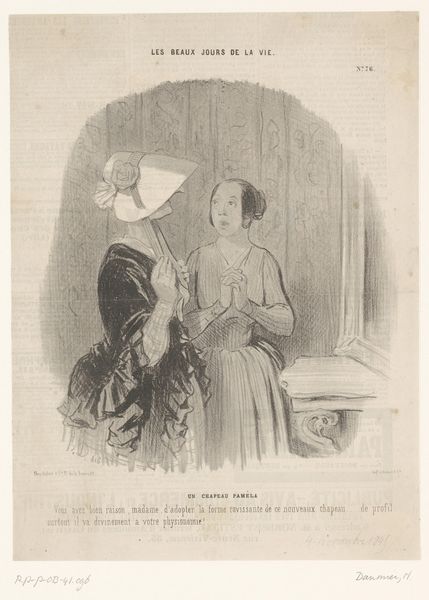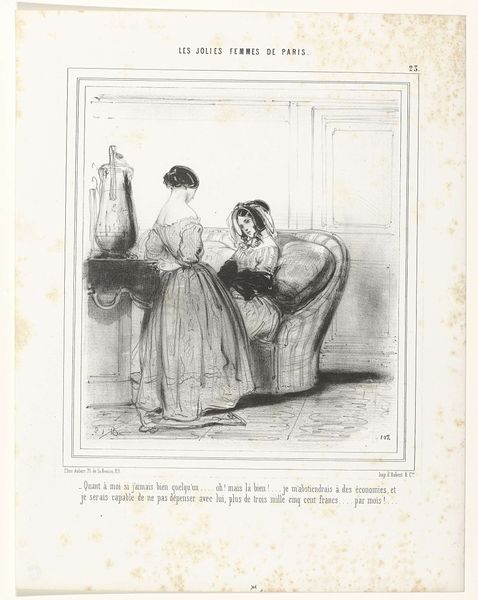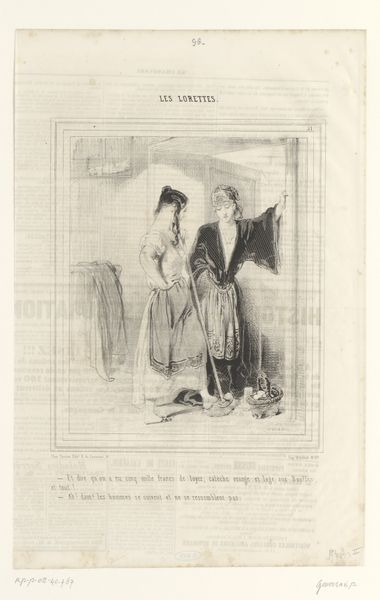
lithograph, print
#
lithograph
# print
#
caricature
#
old engraving style
#
figuration
#
romanticism
#
genre-painting
Dimensions: height 358 mm, width 273 mm
Copyright: Rijks Museum: Open Domain
Curator: Ah, here we have "Two Masked Women at a Ball" by Paul Gavarni, a lithograph print created around 1841. It's currently held in the Rijksmuseum collection. Editor: It's so demure, almost whispered. Like a secret being shared behind silk fans. I'm struck by how poised they are, and also by how static it feels, like figures in a tableau vivant. Curator: Gavarni was a master of social observation through his caricatures, and this piece encapsulates that perfectly. The Romantic era, with its fascination for emotion and the individual, provides an important context here. But these women at carnival—are they truly free, or still constrained by societal expectation, even behind their masks? Editor: That's the question, isn't it? They’re both cloaked in this gorgeous drapery that feels so indulgent and voluminous; the details seem almost obsessive in places. But at the same time, it feels confining somehow. It gives this bittersweet air like a flower suffocating under perfume. Curator: The masks add to that ambiguity, playing with visibility and identity, or a lack thereof. Remember the rise of the bourgeoisie, which shaped the way public entertainment and spaces like the ballrooms were regulated. Gender played a crucial part. So this innocent setting wasn't really without boundaries. Editor: Absolutely. I see it in the difference between how they treat color and darkness too; like one’s trying to merge into the background, trying desperately to blend in, while the other catches the light…waiting. Even their body language is hinting, subtly suggesting something. The way the lithograph gives such strong contrasts only strengthens these oppositions, don’t you think? Curator: Indeed. Lithography itself contributed to this democratization of art. Prints like these became easily distributed via newspapers which influenced public sentiment and discourse and that means the political potential here is so clear; not always to change policies right away but, instead, challenge perspectives of how norms come to be in the first place. Editor: This makes me think about the subtle, unspoken dramas constantly playing beneath society's glittering surfaces, you know? These are stories etched not in grandeur but quiet glances… which is what keeps this relevant, even now. A quiet snapshot of what was—a hint to understanding what could be. Curator: Yes, looking closely into these small moments really can unearth the silent politics in the room, past and present. Editor: Well said, I can look at this piece all day now, and dream.
Comments
No comments
Be the first to comment and join the conversation on the ultimate creative platform.
